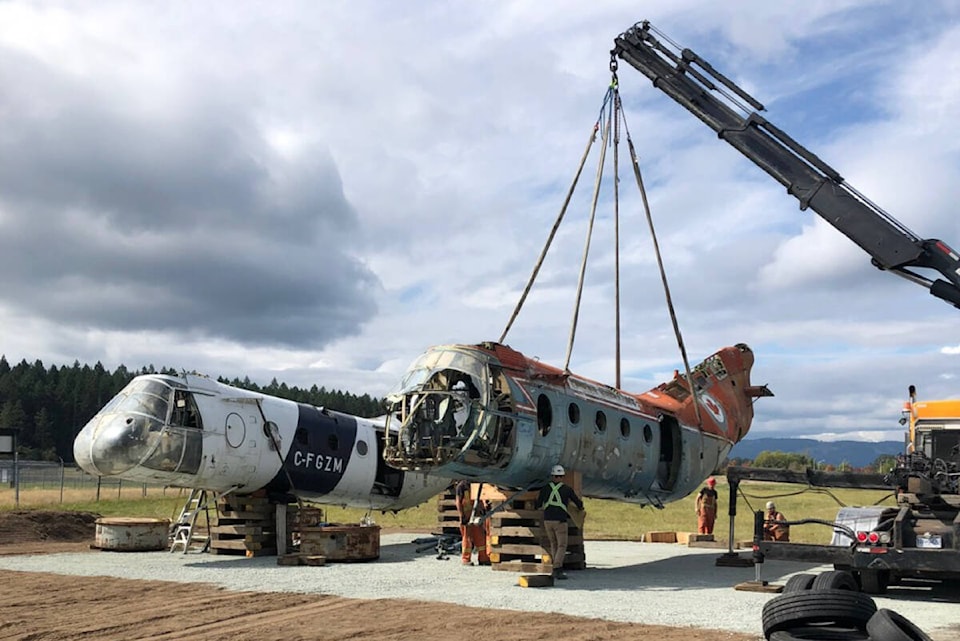In a remarkable moment, the BC Aviation Museum in North Saanich acquired not just one, but a pair of Piasecki helicopters, more commonly referred to as “The Flying Bananas.”
The aircraft in question are easily identifiable thanks to their special feature of dual, overlapping rotor blades.
“These two aircraft Piasecki H21 helicopters are representative of B.C. aviation history as they were both used by the Royal Canadian Air Force (RCAF_ for search and rescue and then for heli-logging in B.C. They were in service from the 1950s through to the 1980s,” said Bob Saunders, board member of the BC Aviation Museum.
This design characteristic grants them a remarkable lifting capacity, making them indispensable for the practise of heli-logging. The helicopters in question boast a storied past, having played a significant role in the operations of the RCAF across a multitude of functions.
The arrival of these helicopters is set to captivate onlookers, as they completed a remarkable journey from Golden, B.C. to Vancouver Island in a grand convoy.
In a feat of engineering, these awe-inspiring aircraft, with a staggering length exceeding 52 feet, have been designed to possess the capability of accommodating a force of 22 fully armed troops, while also demonstrating an impressive capacity to bear immense weights, said Saunders.
“They were transported Nickel Bros Moving on Sept. 5 by trailer from Brisco, B.C. near Golden by specialized low-bed trucks to carry the 53-foot-long helicopters. The aircraft had to be prepared by removing the transmission hub box on top of the rear tailplane of the helicopter in order for it to clear overpasses and then remove the main landing gear and the nose gear to keep the width of the aircraft under eight feet,” Saunders said.
“They will become part of our permanent collection after being reassembled and restored. They are currently sitting on the south side of our restoration hangar and will eventually sit outside on our ramp on the west side of the BC Aviation Museum once they are restored to display condition.”
If you want to take a peek, the BC Aviation Museum is open seven days a week from 10 a.m. to 4 p.m. throughout out the year.
READ ALSO: VIDEO: Fastest aircraft to serve Canadian Forces en route to North Saanich
